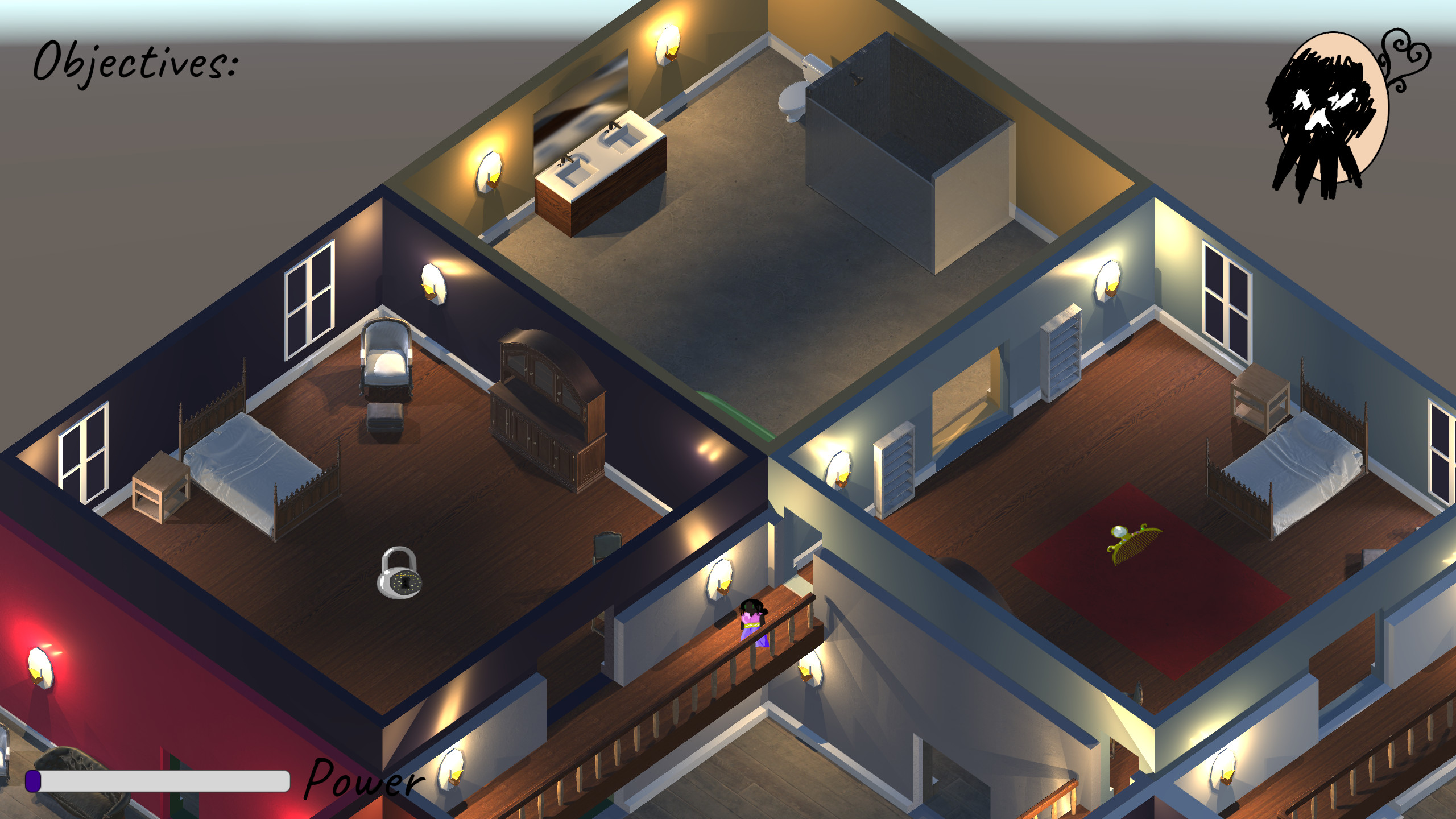
Willow's Mansion
Time frame: July 2023
Role: Gameplay Developer, Designer, UI and Audio Programming
Tools: Unity and Visual Studio
Languages: C#
Team: Nick Campola, Alex Kneipp, Brent Kneipp, Ryan McGee, Akhil Sondhi, and Katherine Stein
Description:
In Willow's Mansion, you embody the spirit of Willow, a child who was murdered. Once a kindred spirit regarded warmly by the local townspeople, a traveling party of ghost hunters inadvertently welcomed all sorts of evil into the mansion Willow haunts. You now must use her powers to guide the characters to artifacts that hold the key to Willow’s power while keeping them out of harm’s way. Be careful not to go too far though! Should the adventurers become spooked, they will flee, leaving Willow with no means to purge the evil spirits.
Development:
This game was made as part of a 48hr development challenge by a team of 5. All music is original and composed by Brent Kneipp specifically for this game. The artwork and character design were similarly created by Nick Campola. Almost all 3D assets and the terrain map were created by Ryan McGee - some 3rd party assets were incorporated under creative commons (see credits). Katherine Stein and Alex Kneipp were the primary developers for the game, incorporating the various elements and game mechanics. UI elements were implemented by Katherine Stein and AI logic was developed by Alex Kneipp.
Challenges:
One challenge was that only one person on our team was familiar with Unity. Despite this, the other members were able to pick up on it quickly. This was also the first time working together as a group. Given only 48 hours, we had to learn how to work with each other without sacrificing our vision. While working together was not a challenge, figuring out how to do so could be. Alex and I handled programming, Brent created all of the music and sound effects, Nick handled all 2D art and UI assets, Akhil handled project management and narrative, and Ryan modeled the level and took care of the lighting. Since we created every asset in the game, that put pressure on the programmers who had to implement everything in the game and make sure they worked well together. Right now, we plan on working together for the next game jam. One thing we talked about during our post mortem was that the level creator would handle things such as adding the navmesh, the person creating the audio would add the audio cues to the level, and so on. Distributing the work this way will free up the programmers to work more on the AI, gameplay, and the gameplay loops for example.
What went well:
Even with the majority of the team learning Unity for the first time, everyone was able to ask each other questions and there was no judgement for not knowing how to do something. This created a safe place to offer ideas and give constructive criticism. We were able to talk about what went well, and what could have been done differently for next time in a post mortem.